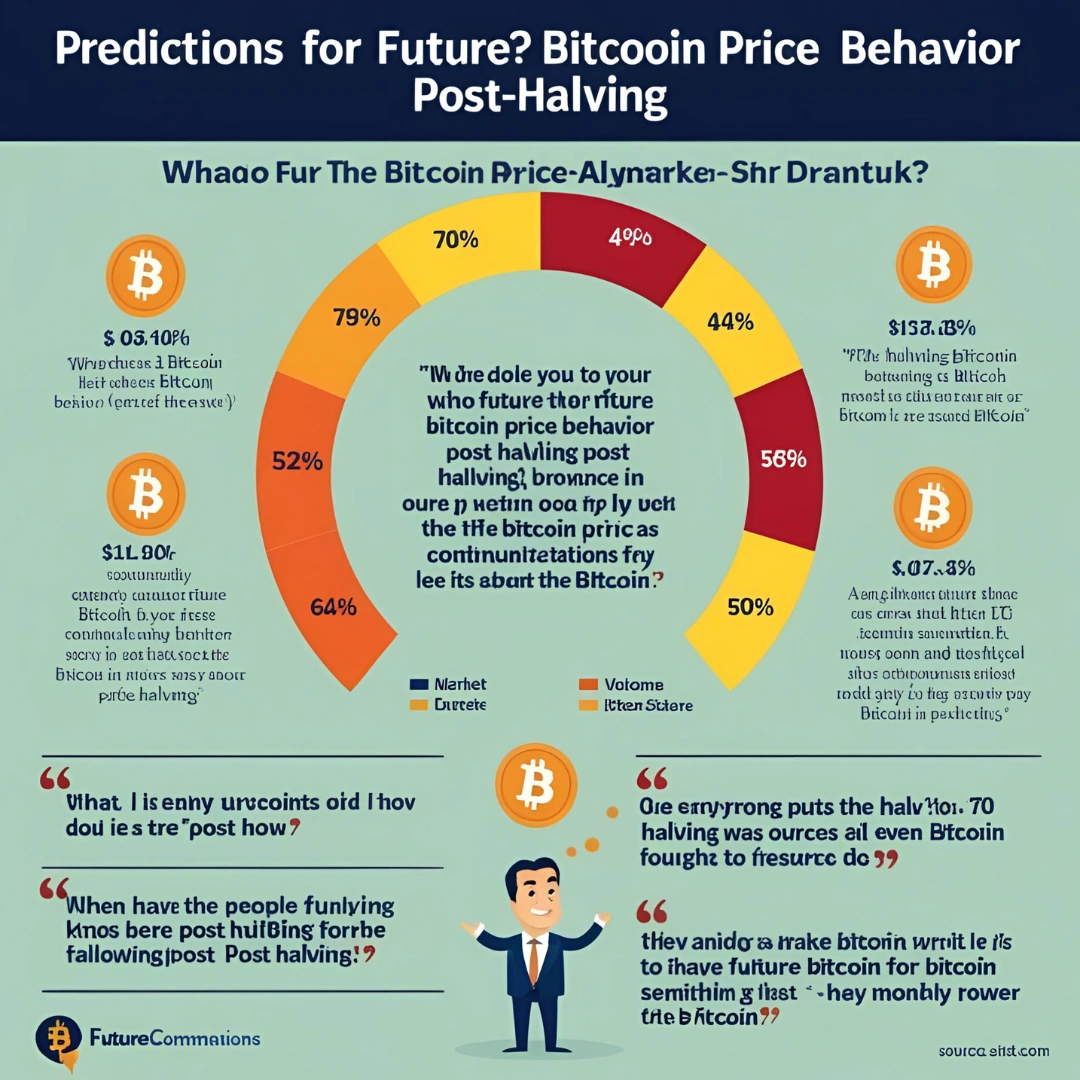One of the most anticipated events in the cryptocurrency world, the Bitcoin halving has a big impact on price movements, miner payouts, and supply. Each halving has historically caused significant price swings, propelling Bitcoin to all-time highs. However, what is ahead? Will history buck the trend or will the upcoming Bitcoin halving spark another bull run?
In this blog, we’ll dive deep into:
✅ What Bitcoin halving is and why it happens.
✅ Historical price trends after previous halvings.
✅ Future predictions for Bitcoin’s price post-halving.
✅ How you can prepare for the next Bitcoin halving.
Let’s explore how Bitcoin halvings have shaped the market and what we can expect next!
1. What Is Bitcoin Halving?
The Bitcoin halving is a planned occurrence that, roughly every four years (or after every 210,000 blocks), lowers the block reward awarded to miners by 50%. This system maintains a limited supply of 21 million Bitcoin by controlling its inflation.
🔹 Why does Bitcoin halve?Bitcoin’s creator, Satoshi Nakamoto, intended halving to gradually lower the number of new BTC entering circulation, making Bitcoin scarcer over time. This is in line with the economic theory of supply and demand, which states that when supply declines, prices often increase (assuming demand remains high).
🔹 Bitcoin Halving Schedule
Bitcoin halvings occur roughly every four years. Here’s a breakdown:
| Halving Date | Block Height | Miner Reward (BTC) | Total BTC Supply Reached |
|---|---|---|---|
| Nov 28, 2012 | 210,000 | 50 → 25 | 10.5 million BTC |
| July 9, 2016 | 420,000 | 25 → 12.5 | 15.75 million BTC |
| May 11, 2020 | 630,000 | 12.5 → 6.25 | 18.375 million BTC |
| April 2024 (Upcoming) | 840,000 | 6.25 → 3.125 | 19.6875 million BTC |
Because it is more difficult to mine new Bitcoin as a result of each halving, bullish price trends are frequently triggered.
2. Historical Impact of Bitcoin Halving on Price
Although the consequences weren't felt right away, Bitcoin halvings have traditionally caused significant bull runs. The price impact of previous Bitcoin halvings is examined below.
📌 First Halving (2012) – Bitcoin’s First Major Rally
- Before Halving: $12 per BTC
- 1 Year Later: $1,000 per BTC (+8,200%)
🔹 Market Reaction:Bitcoin had a parabolic rise following the initial halving, driven by rising adoption and more media coverage.
🔹 Lesson:The pattern—a decrease in supply causes a price increase—was set by the first halving.
📌 Second Halving (2016) – The Birth of Institutional Interest
- Before Halving: $650 per BTC
- 1 Year Later: $20,000 per BTC (+3,000%)
🔹 Market Reaction:Strong institutional interest followed this halving, and businesses and hedge funds started to take Bitcoin seriously. In December 2017, the bull run reached its zenith.
🔹 Lesson:
Bitcoin’s adoption rate increased, bringing higher trading volumes and more investors.
📌 Third Halving (2020) – The Rise of the Crypto Boom
- Before Halving: $8,500 per BTC
- 1 Year Later: $69,000 per BTC (+700%)
🔹 Market Reaction:Institutional behemoths like Tesla and MicroStrategy invested in Bitcoin during the COVID-19 pandemic, which coincided with the 2020 halving. DeFi, NFTs, and other significant crypto breakthroughs were also introduced during the post-halving timeframe.
🔹 Lesson:
The cycle repeated—lower supply + growing demand = price explosion.
3. What to Expect After the 2024 Bitcoin Halving?
Given our knowledge of past patterns, let's examine possible outcomes for the next April 2024 Bitcoin halving.
🔹 Scarcity Effect:The daily issuance of new Bitcoin will drastically decline when rewards fall to 3.125 BTC each block. There will probably be a price increase if demand remains high.
🔹 Institutional & ETF Demand:Institutions now have a regulated option to invest in Bitcoin thanks to the introduction of Bitcoin Spot ETFs. Massive capital inflows could result from this, driving up prices.
🔹 Macroeconomic Factors:The 2024 event will take place amid rising interest rates and high inflation, in contrast to earlier halvings. Bitcoin's reputation as "digital gold" might draw in more investors if conventional markets falter.
4. Bitcoin Price Predictions for 2024-2025
Analysts and experts have boldly predicted where the price of Bitcoin may go after it has been halved.
🔹 Standard Cycle Prediction:
The majority of observers anticipate that Bitcoin will continue its conventional cycle, which means:
- Pre-Halving: Price remains volatile.
- 6-12 Months Post-Halving: Gradual bull run, with new all-time highs expected.
- 2025 Peak Prediction: Between $100,000 and $250,000 per BTC.
🔹 PlanB’s Stock-to-Flow Model:
Based on its scarcity, PlanB's Stock-to-Flow (S2F) model forecasts the price of Bitcoin. In line with this model:
- Post-2024 Halving: Bitcoin could reach $288,000.
However, critics argue that macroeconomic conditions could influence Bitcoin differently this time.
🔹 Bearish Case: Could Bitcoin Break the Cycle?
Some analysts believe that:
- The market for Bitcoin is maturing, so the halving may not have the same dramatic impact.
- Global financial uncertainties and regulatory concerns may postpone a bull run.
- Bitcoin may find it difficult to hit new highs if institutional investors sell off their holdings.
Worst-case scenario: Bitcoin may remain in the $40,000–$60,000 range for a longer period of time than anticipated.
5. How to Prepare for the Next Bitcoin Halving
The following are potential tactics to profit from the impending halving of Bitcoin:
1. Accumulate Bitcoin Before the Halving
The ideal times to purchase Bitcoin in the past have been six to twelve months before to a halving. To gradually accumulate Bitcoin, think about using dollar-cost averaging (DCA).
2. Hold Bitcoin in Secure Wallets
Avoid keeping Bitcoin on exchanges. Instead, use:
🔹 Cold Wallets (Ledger, Trezor) for long-term holding.
🔹 Temporary email services like 10minutesmails, mytemp-mail, Free Temp Mail to prevent phishing attacks when signing up for crypto platforms.
3. Diversify Your Portfolio
While Bitcoin is expected to rise, consider diversifying into:
✅ Ethereum – Leading smart contract blockchain.
✅ DeFi & Layer 2 Projects – Growing sectors in crypto.
✅ Stablecoins – To hedge against volatility.
4. Watch Institutional Trends
The next move of Bitcoin will be greatly influenced by macroeconomic developments, legislation, and ETF inflows.
Conclusion: Will Bitcoin Follow Its Halving Trend Again?
In the past, significant price spikes have followed Bitcoin halvings, and many predict that the 2024 halving will set off another bull run. This time, though, the cycle might be impacted differently by macroeconomic circumstances and regulatory elements.
✅ Historical Data Suggests: Bitcoin could hit $100K-$250K by 2025.
✅ Bearish Case: Institutional pressure and regulations could slow momentum.
Regardless of forecasts, one thing is for sure: Bitcoin is becoming more rare, and the long-term picture is still positive as demand increases.
Are you ready for the next Bitcoin halving? 🚀





Leave a Reply